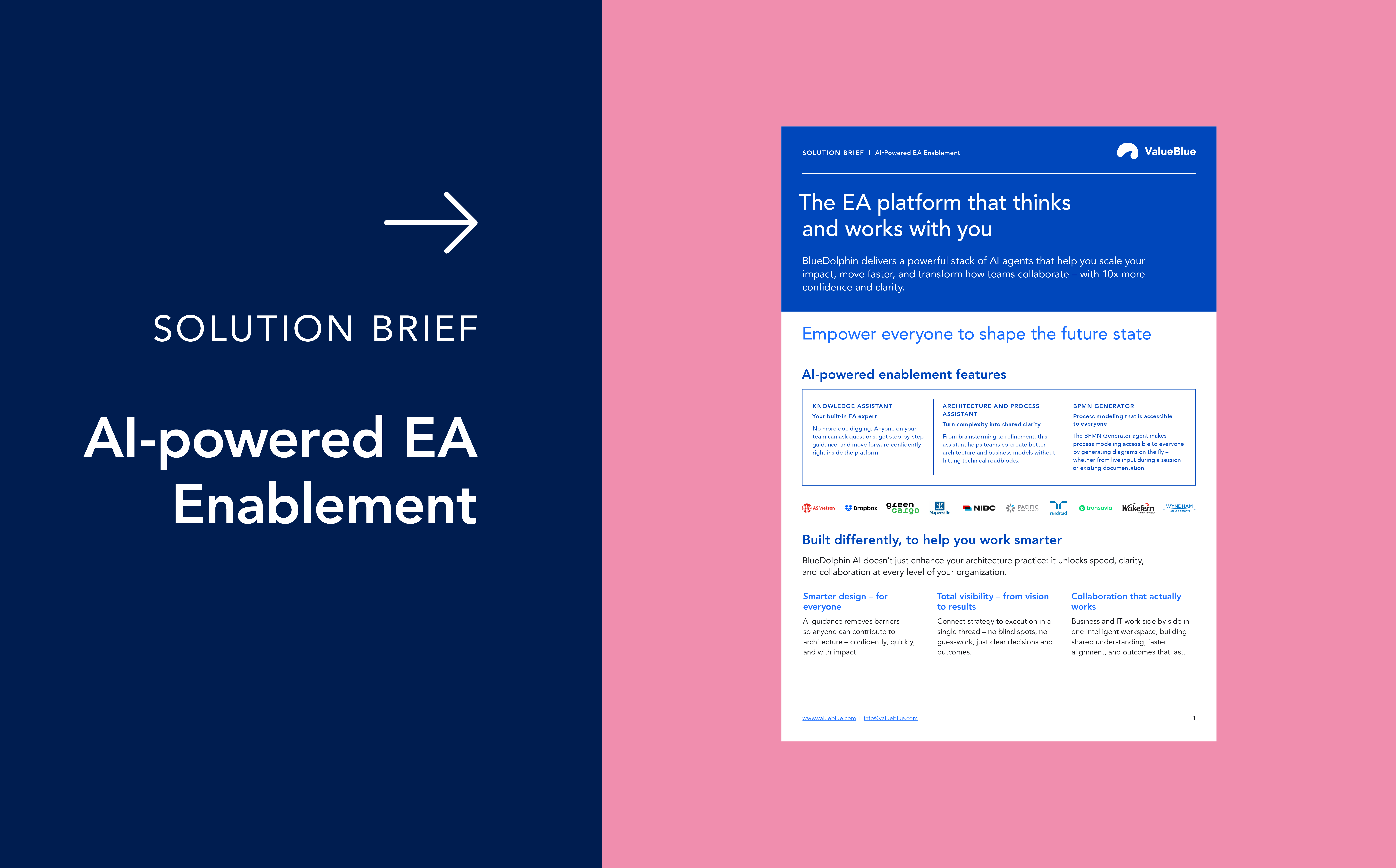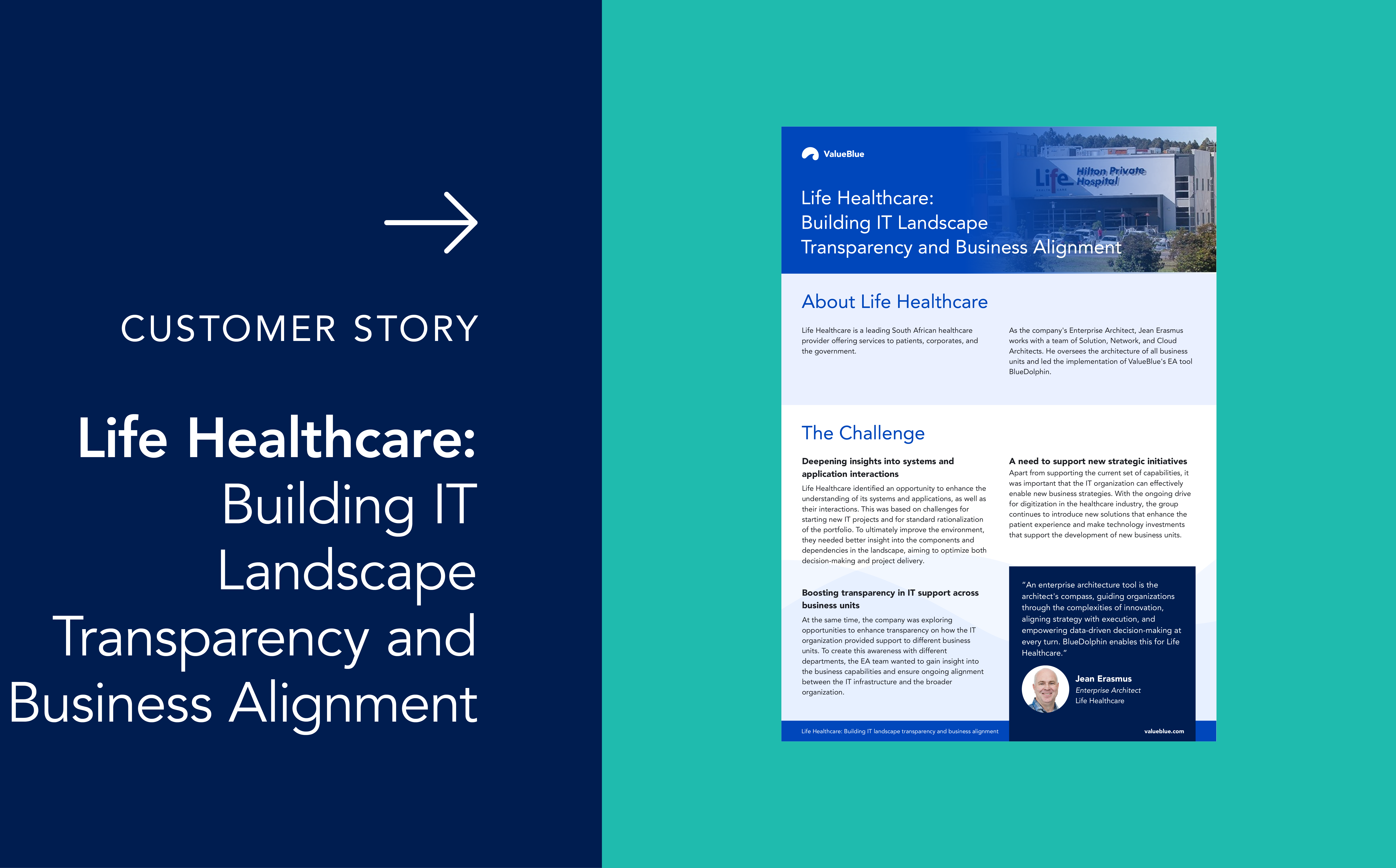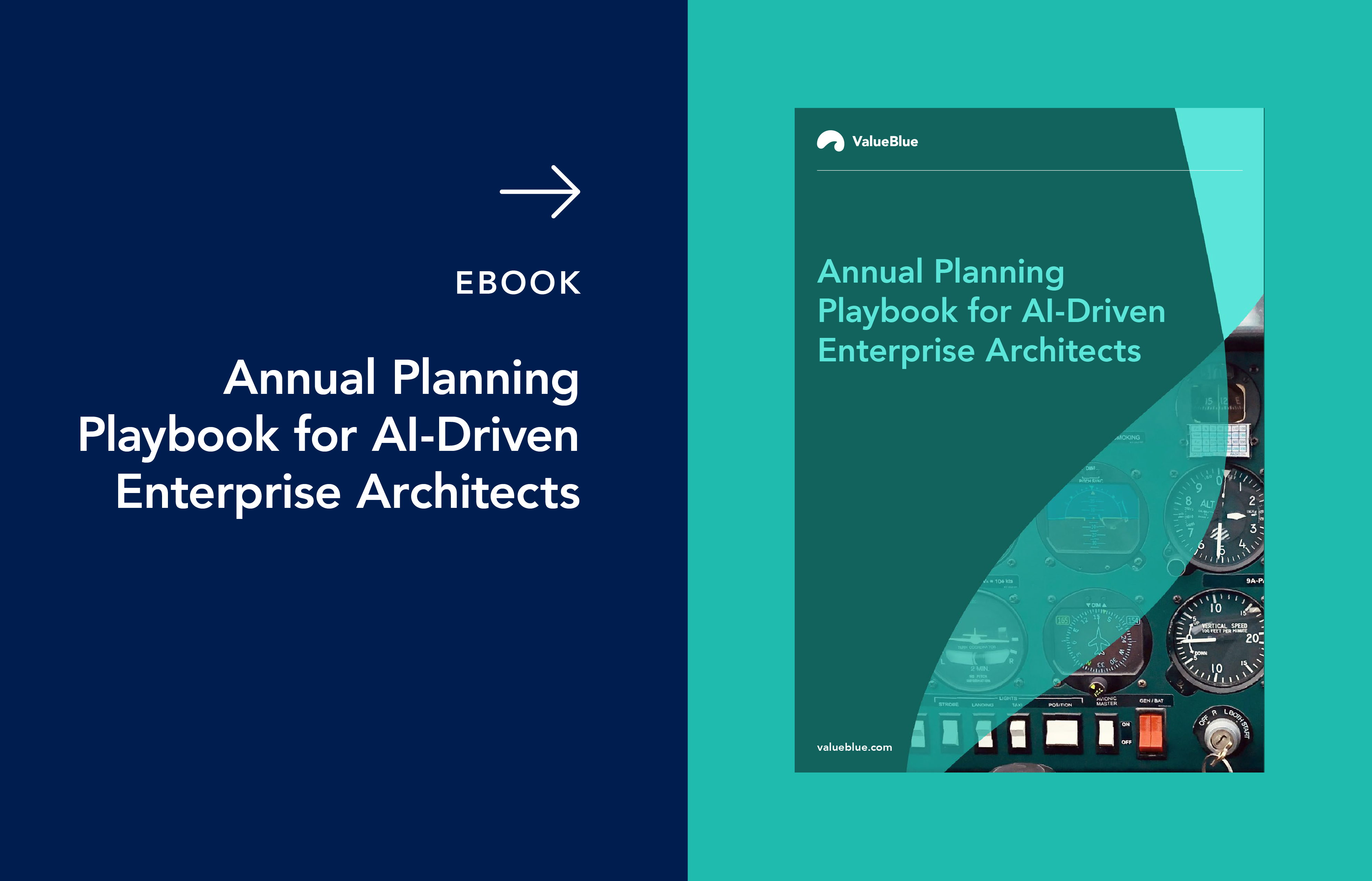Safeguarding Critical Infrastructure with Enterprise Architecture
Critical infrastructure, from regional power grids to municipal water plants, mass-transit networks to telecommunications hubs, is vital to business and essential to societal stability. Yet, when more than 80 percent of IT budgets in federal systems are tied up merely keeping older systems running, the risks escalate.
In this article, you’ll learn how Enterprise Architecture (EA) offers more than just alignment between business and IT: it delivers the visibility, governance, and adaptability that organizations need to protect their most critical systems, avert disruption, and build long-term resilience.
Table of contents
Why critical infrastructure protection requires Enterprise Architecture
How Enterprise Architecture improves visibility and control
Building resilience through architecture governance
Bridging IT and OT with integrated design
Common challenges and how to overcome them
Key takeaways
FAQ
Why critical infrastructure protection requires Enterprise Architecture
Critical infrastructure systems, energy, water, transportation, healthcare, and communications, are becoming more connected and digitally dependent every year. This interconnectedness drives innovation but also increases exposure to cyberattacks, cascading failures, and compliance risks.
Recent incidents, such as the Colonial Pipeline ransomware attack in the U.S. and widespread power grid disruptions in Europe, show how interdependencies between digital and physical systems can amplify impact. According to ENISA’s Threat Landscape for Critical Sectors 2024, over 60% of incidents in critical infrastructure now stem from IT/OT convergence vulnerabilities.
According to the U.S. Cybersecurity and Infrastructure Security Agency (CISA), protecting these systems is essential to the economy and public safety. Yet many organizations still rely on siloed systems, outdated network maps, and informal processes to manage them.
Enterprise Architecture changes this by providing a structured, holistic view of the business, technology, data, and application layers that support these essential systems. It connects strategy to execution, helping leaders see dependencies, assess risks, and make informed decisions.
Resilience by design begins with understanding the system of systems that makes critical infrastructure work – and ensuring security, continuity, and compliance are embedded at every layer.
How Enterprise Architecture improves visibility and control
The first step toward safeguarding critical infrastructure is understanding it. EA provides a dynamic blueprint that captures how people, processes, technology, and data interact across an organization.
By modeling this environment, enterprise architects can:
- Identify vulnerabilities and interdependencies. Mapping systems, data flows, and interfaces exposes weak points before they lead to downtime or breaches.
- Align technology with regulatory frameworks. EA ensures compliance with standards such as NIST, ISO 27001, and the U.S. National Infrastructure Protection Plan.
- Monitor change in real time. Modern EA tools like BlueDolphin allow continuous updates and collaborative oversight, giving stakeholders a living model of their infrastructure landscape.
This visibility forms the foundation of both proactive risk management and effective incident response. As Gartner notes, organizations using digital twins of the enterprise for resilience planning achieve 30% faster recovery from major disruptions compared to those relying on static documentation. Gartner: ‘A digital twin is a digital representation of a real-world entity or system. The implementation of a digital twin is an encapsulated software object or model that mirrors a unique physical object, process, organization, person or other abstraction. Data from multiple digital twins can be aggregated for a composite view across a number of real-world entities, such as a power plant or a city, and their related processes.’
Building critical infrastructure resilience through architecture governance
Resilience begins with governance – the policies, standards, and decision frameworks that ensure every technology investment aligns with security and continuity goals.
An architecture governance model helps critical infrastructure operators:
- Define ownership and accountability for systems and processes.
- Establish standard architectures and patterns that prevent fragmentation.
- Incorporate cybersecurity and resilience requirements at the design stage.
Risk-based architecture governance scales oversight based on system criticality, ensuring the right level of control without slowing modernization. This approach mirrors the principle of resilience by design, anticipating, absorbing, recovering from, and adapting to disruption, as outlined in ISO 22316.
With ValueBlue’s BlueDolphin platform, architecture governance becomes a shared, transparent process. Business and IT leaders can collaborate on architecture decisions, visualize dependencies, and track compliance. That means fewer surprises – and faster, coordinated responses when issues arise.
Bridging IT and OT with integrated design
One of the toughest challenges in infrastructure protection is bridging the gap between IT systems and Operational Technology (OT). Traditionally, these environments operated separately: IT managed data and communications, while OT handled physical systems such as pumps, turbines, and sensors.
Today, digital transformation has merged the two. Smart grids, connected pipelines, and automated transport systems now depend on both worlds working seamlessly – and securely – together.
Enterprise Architecture provides the unifying framework. By mapping shared assets, data flows, and security controls across IT and OT domains, EA enables:
- Unified risk assessment across digital and physical layers.
- Standardized access and authentication through zero-trust principles.
- Cross-functional collaboration between engineers, architects, and cybersecurity teams.
This integration ensures modernization doesn’t come at the expense of safety or stability. Incorporating frameworks such as ISA/IEC 62443 and NIST SP 800-82 into the EA model helps organizations adopt secure-by-design reference architectures for industrial control systems – turning compliance into a design advantage rather than a constraint.
Common challenges protecting critical infrastructure through EA and how to overcome them
Even with the right strategy, protecting critical infrastructure through EA can face obstacles. Common pitfalls include:
- Legacy systems. Many critical environments still rely on decades-old technologies. EA helps identify and prioritize modernization paths, using modeling to simulate impact before making changes.
- Siloed teams. Fragmented decision-making weakens resilience. BlueDolphin promotes cross-departmental collaboration with shared views of assets and dependencies.
- Resource limitations. EA helps maximize limited budgets by aligning projects to the most critical risks and business outcomes.
- Static documentation. Traditional architecture diagrams age quickly. A living, cloud-based platform ensures accuracy and transparency as systems evolve.
EA also supports resilience maturity, moving organizations from reactive to proactive:
Level 1: Reactive response – Uncoordinated incident handling.
Level 2: Documented architecture – Visibility within silos.
Level 3: Modeled resilience – Cross-domain risk mapping.
Level 4: Automated assurance – Continuous, governed oversight.
By tackling these barriers with structured architecture practices, organizations can build more resilient operations without sacrificing agility.
Key takeaways
- Enterprise Architecture offers holistic visibility across business, technology, and operational domains.
- BlueDolphin enables collaboration and real-time governance for infrastructure resilience.
- Integrated design bridges IT and OT, reducing complexity and risk.
- Architecture governance and compliance alignment are essential for long-term stability.
- A living architecture model supports proactive protection, not reactive recovery.
Strengthen your critical infrastructure resilience strategy through Enterprise Architecture
Modern critical infrastructure requires continuous oversight, cross-functional communication, and rapid adaptability. Enterprise Architecture provides that foundation.
At ValueBlue, we help organizations visualize and manage complexity through our collaborative EA platform, BlueDolphin. Whether your goal is to modernize legacy systems, meet regulatory standards, or ensure business continuity, BlueDolphin gives you the clarity and control to act decisively.
Request a demo to see how BlueDolphin can help your organization safeguard its most vital systems.
FAQ
1. What is critical infrastructure?
Critical infrastructure includes essential systems such as energy, water, transportation, healthcare, and communications– assets vital to the functioning of society and the economy.
2. How does Enterprise Architecture help protect it?
EA maps dependencies, standardizes processes, and aligns security and modernization efforts, helping organizations prevent and respond to disruptions.
3. What challenges do infrastructure operators face today?
Aging systems, siloed teams, compliance pressures, and cyber threats make resilience complex. EA provides the structure and visibility to manage it effectively.
4. How does BlueDolphin support infrastructure protection?
BlueDolphin allows stakeholders to visualize their infrastructure landscape, model risks, align IT and OT systems, and collaborate on security and modernization initiatives in real time.
5. Where should organizations start?
Begin with architecturemodeling and governance. Establish clear ownership, document dependencies, and build a roadmap for secure, sustainable modernization.





